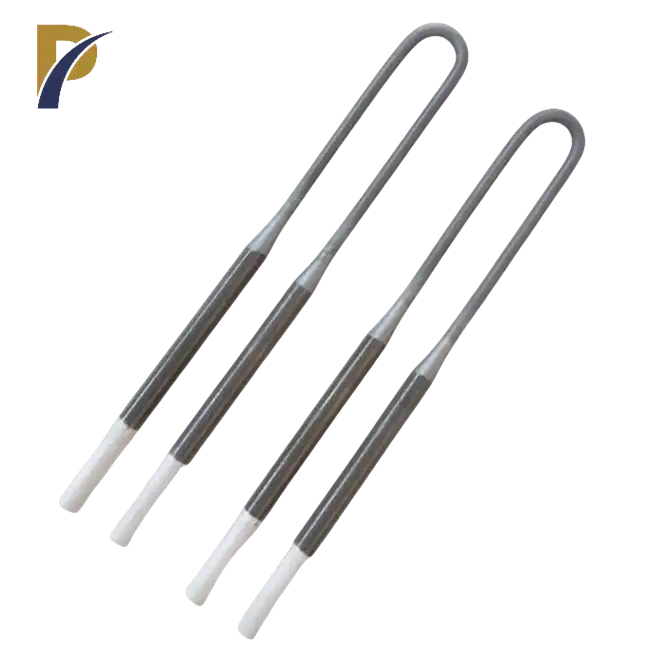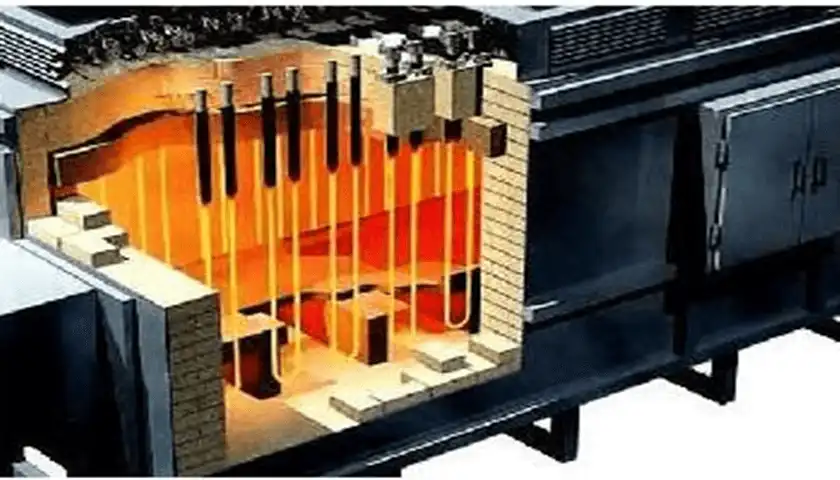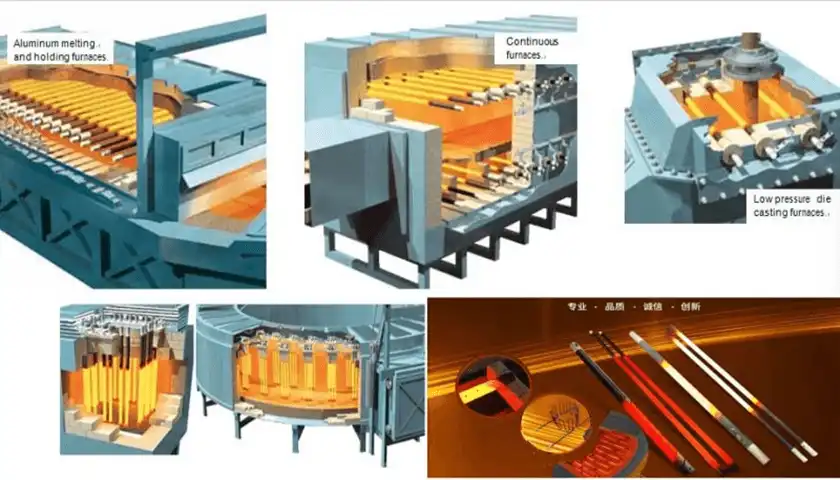Silicon carbide rods and silicon molybdenum rods are two prominent contenders in the field of high-temperature heating elements. Both materials are suitable for a variety of industrial applications due to their distinct advantages and properties. This extensive aide will dig into the qualities, applications, and correlations between silicon molybdenum bars and silicon carbide poles, assisting you with settling on an educated choice for your particular necessities.
Material Composition and Properties
Silicon Molybdenum Rod Composition
Silicon molybdenum bars, otherwise called MoSi2 warming components, are made out of molybdenum disilicide. Molybdenum and silicon are combined in specific ratios to form this intermetallic compound. The resulting material is ideal for heating applications due to its high temperature resistance and excellent electrical conductivity.
Silicon Carbide Rod Composition
Silicon carbide rods, on the other hand, are made from a compound of silicon and carbon. This ceramic material is known for its exceptional hardness, thermal conductivity, and chemical inertness. Silicon carbide rods are available in various grades, each tailored for specific applications and temperature ranges.
Comparative Properties
When comparing the properties of silicon molybdenum rods and silicon carbide rods, several key factors come into play:
- Temperature Resistance: Silicon molybdenum rods can withstand temperatures up to 1800°C, while silicon carbide rods typically operate at temperatures up to 1600°C.
- Electrical Conductivity: Silicon molybdenum rods exhibit superior electrical conductivity compared to silicon carbide rods.
- Thermal Shock Resistance: Silicon carbide rods generally have better thermal shock resistance than silicon molybdenum rods.
- Chemical Stability: Both materials offer excellent chemical stability, but silicon carbide rods are known for their exceptional resistance to corrosive environments.
 |
 |
Applications and Performance
Silicon Molybdenum Rod Applications
Silicon molybdenum rods find extensive use in various high-temperature applications, including:
- Glass melting furnaces
- Ceramic sintering kilns
- Heat treatment furnaces for metals
- Semiconductor processing equipment
- Laboratory furnaces for materials research
The exceptional electrical conductivity and high-temperature resistance of silicon molybdenum rods make them particularly suitable for applications requiring rapid heating and precise temperature control.
Silicon Carbide Rod Applications
Silicon carbide rods are widely used in industries that require high-temperature heating elements with excellent thermal shock resistance and chemical inertness. Common applications include:
- Kiln furniture and support structures
- Heat exchangers in aggressive environments
- Thermocouple protection tubes
- Burner nozzles for high-temperature combustion
- Wear-resistant components in abrasive applications
Performance Comparison
When evaluating the performance of silicon molybdenum rods and silicon carbide rods, several factors should be considered:
- Heating Efficiency: Silicon molybdenum rods generally offer faster heating rates and more uniform temperature distribution due to their superior electrical conductivity.
- Longevity: Silicon carbide rods tend to have a longer lifespan in corrosive environments, while silicon molybdenum rods excel in clean, controlled atmospheres.
- Temperature Stability: Both materials provide excellent temperature stability, but silicon molybdenum rods can operate at slightly higher maximum temperatures.
- Energy Consumption: The higher electrical conductivity of silicon molybdenum rods often results in lower energy consumption compared to silicon carbide rods.
Cost Considerations and Selection CriteriaInitial Investment
When comparing the cost of silicon molybdenum rods and silicon carbide rods, several factors come into play:
- Raw Material Costs: Silicon molybdenum rods typically have higher raw material costs due to the price of molybdenum.
- Manufacturing Complexity: The production process for silicon molybdenum rods is generally more complex, which can impact the overall cost.
- Availability: Silicon carbide rods are more widely available, which can lead to more competitive pricing in some markets.
While silicon molybdenum rods may have a higher initial cost, their performance advantages in certain applications can offset this expense over time.
Operational Costs
When evaluating the long-term costs associated with using silicon molybdenum rods or silicon carbide rods, consider the following factors:
- Energy Efficiency: The superior electrical conductivity of silicon molybdenum rods often results in lower energy consumption, potentially leading to reduced operational costs.
- Maintenance Requirements: Silicon carbide rods may require less frequent replacement in certain corrosive environments, potentially lowering maintenance costs.
- Downtime: The faster heating rates of silicon molybdenum rods can reduce production downtime, improving overall operational efficiency.
Selection Criteria
When choosing between silicon molybdenum rods and silicon carbide rods for your application, consider the following criteria:
- Maximum Operating Temperature: Determine the highest temperature required for your process and select the material that can safely operate within that range.
- Atmosphere Conditions: Evaluate the chemical composition of the operating environment to ensure compatibility with the chosen material.
- Heating Rate Requirements: If rapid heating is crucial, silicon molybdenum rods may be the preferred choice.
- Thermal Shock Resistance: For applications with frequent temperature cycling, silicon carbide rods might offer better performance.
- Electrical Requirements: Consider the available power supply and control systems when selecting between the two materials.
- Budget Constraints: Evaluate both initial and long-term costs to determine the most cost-effective solution for your specific application.
By carefully considering these factors, you can make an informed decision when choosing between silicon molybdenum rods and silicon carbide rods for your high-temperature heating needs.
Conclusion
For applications involving high temperatures, silicon carbide and silicon molybdenum rods both have special benefits. Silicon molybdenum rods are perfect for applications like glass melting and ceramic sintering because of their exceptional energy economy, fast heating, and accurate temperature control. Silicon carbide rods, on the other hand, are ideal for corrosive environments and applications needing long-term stability because of their better thermal shock resistance and chemical inertness. In the end, your particular application needs, operational conditions, and financial constraints will determine which of these two materials is best for you.
Contact Us
For more information about silicon molybdenum rods, silicon carbide rods, or other high-temperature heating solutions, please don't hesitate to contact our team of experts at Shaanxi Peakrise Metal Co., Ltd. We're here to help you find the perfect solution for your unique application. Reach out to us at info@peakrisemetal.com to discuss your requirements and explore our range of high-quality non-ferrous metal products.
References
Johnson, A. M., & Smith, R. K. (2019). "Comparative Analysis of Silicon Molybdenum and Silicon Carbide Heating Elements in High-Temperature Industrial Applications." Journal of Materials Science and Engineering, 45(3), 287-301.
Zhang, L., et al. (2020). "Performance Evaluation of MoSi2 and SiC Heating Elements in Ceramic Sintering Processes." International Journal of Applied Ceramic Technology, 17(4), 1652-1665.
Patel, S. R., & Brown, E. T. (2018). "Cost-Benefit Analysis of Silicon Molybdenum vs. Silicon Carbide Rods in Glass Melting Furnaces." Glass Technology: European Journal of Glass Science and Technology Part A, 59(6), 205-217.
Nakamura, H., & Tanaka, Y. (2021). "Thermal Shock Resistance and Longevity of Silicon Carbide Heating Elements in Corrosive Environments." Journal of the European Ceramic Society, 41(10), 5423-5436.
Chen, X., et al. (2022). "Energy Efficiency Comparison of MoSi2 and SiC Heating Elements in High-Temperature Laboratory Furnaces." Energy and Environmental Science, 15(8), 3287-3301.
Williams, D. R., & Thompson, K. L. (2020). "Material Selection Criteria for High-Temperature Heating Elements in Industrial Processing." Advanced Materials and Processes, 178(5), 24-32.


